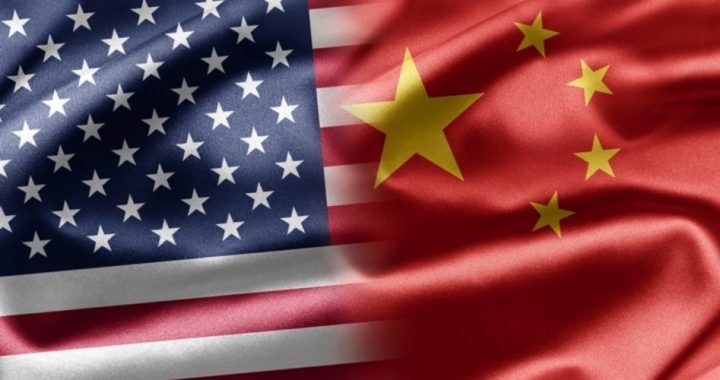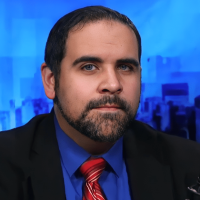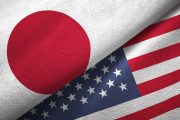
The proposed Trans-Pacific Partnership (TPP), regarded by many in the media and the federal government as a new “free trade” agreement (FTA), is currently being negotiated among 12 nations: Australia, Brunei, Canada, Chile, Japan, Malaysia, Mexico, New Zealand, Peru, Singapore, the United States, and Vietnam. As with the North American Free Trade Agreement (NAFTA) in the 1990s, advocates of the new TPP make the same sugarcoated promises that the TPP will spur economic growth for its participatory states, create jobs in the United States, and stimulate the U.S. economy.
Simultaneously, another and even larger FTA is being proposed — ostensibly by China — that would include not only the 12 aforementioned TPP negotiating nations but also Communist China and Russia. This “alternative” FTA is known as the Free Trade Area of the Asia-Pacific (FTAAP).
The American mainstream media generally portray the TPP as the “good” U.S.-backed FTA, at odds with the “rival,” “bad” Chinese-backed alternative FTAAP. However, one senior Chinese diplomat is not buying into this U.S./TPP vs. China/FTAAP paradigm and has instead essentially verified what The New American has previously reported (here and here): that the TPP is not a “rival” to the FTAAP but in fact is a “stepping stone” toward the FTAAP.
In an online article published in the Huffington Post, Li Shengjiao, a former counselor in the Foreign Ministry of China, describes the current TPP-FTAAP situation as follows:
There have been many voices in the U.S. that have described the TPP and the Free Trade Area of the Asia-Pacific (FTAAP) as two complete competing trade initiatives, and labeled the “competition” as a China-U.S. tug-of-war in the Asia-Pacific region. They fear that China is trying to gain dominance in Asia-Pacific trade agendas and displace the U.S.-led TPP by pushing for the FTAAP. Although the appearance of rivalry does exist, much of the hype is overblown. [Emphasis added.]
An official representative of the Communist Party of China (CPC)-controlled government in Beijing, Li Shengjiao is in favor of these agreements, most particularly the FTAAP. And to him, the U.S. media’s propagation of a U.S.-China rivalry over the two trade pacts is a tedious obstacle obstructing the TPP’s passage in order to move forward with the expanded FTAAP. The rivalry, he says, is “hype” that is “overblown,” because he wants the FTAAP to be implemented. Although acknowledging this seeming U.S.-China rivalry, Li admits that both the TPP and FTAAP are not mutually at odds with one another, as reported by the media, but are instead “compatible and complement each other.” He states:
The FTAAP is seen by many as a rival to the U.S.-led TPP, which is currently under negotiation with Japan and 10 other Asia-Pacific countries, with the exclusion of the world’s second-largest economy. The truth is, the FTAAP is neither necessarily a contradiction nor a challenge to the TPP; the two trade arrangements could be compatible and complement each other. [Emphasis added.]
Behind the appearance of rivalry can be found the framework for increased cooperation and regional integration. Rather than being a Chinese “competitor” to the U.S.-backed TPP, the FTAAP was in fact a creation of the United States, as envisioned by the American establishment, according to Li.
“The initiative was first formally proposed by the APEC at its Hanoi Summit as early as in 2006 and endorsed by all the 21 APEC leaders, including then-U.S. President George W. Bush,” writes Li. In fact, it was then-U.S. Trade Representative Susan Schwab under George W. Bush who praised APEC at its 2007 summit in Cairns, Australia, and endorsed the FTAAP.
According to a June 29, 2007 article from the online archives of the U.S. Embassy in Canberra, Australia, Ambassador Schwab is recorded as saying, “FTAAP is a visionary proposal that APEC is well-suited to take on.” She continued, “By more effectively knitting together the dynamic economies of the region, an FTAAP would some day yield enormous social and commercial benefits for the people of the Asia-Pacific region, including the United States.”
Li Shengjiao also notes in his article that the FTAAP was initially backed by C. Fred Bergsten, an American globalist insider and member of the CFR. “Noted American economist C. Fred Bergsten, then-director of the Peterson Institute for International Economics, even made a strong statement in favor of the FTAAP, arguing that it would represent the largest single liberalization in history,” Li reveals.
The Peterson Institute for International Economics (PIIE) has a long history of playing an essential role in the promotion of the World Trade Organization (WTO), International Monetary Fund (IMF), United Nations (UN), and FTAs such as NAFTA, TPP, and the FTAAP. In 2013, the PIIE published a pro-TPP book entitled Understanding the Trans-Pacific Partnership. On page 3 coauthors Jeffrey Schott, Barbara Kotschwar, and Julia Muir reveal the TPP’s long-term strategic objectives:
The TPP is regarded as an interim arrangement or stepping stone toward a broader, regionwide Free Trade Area of the Asia Pacific (FTAAP), possibly within a decade, as envisaged by APEC leaders in Bogor in November 1994 and reaffirmed more recently by them in their meeting in Honolulu in November 2011. TPP negotiators are not only thinking about new countries joining the ongoing talks but also planning and constructing the trade pact with a view toward future linkages with other APEC members, including and especially China. [Emphasis added.]
On page 51, in the book’s sixth chapter, revealingly entitled “Moving from TPP to FTAAP,” the authors assert:
The current TPP architects envision building an eventual FTAAP on the comprehensive foundations of the TPP accord, with other APEC countries joining the pact in coming years through an accession process similar to that provided in the WTO for new members. [Emphasis added.]
Another more recent and prominent source that further sheds light on the FTAAP’s U.S. origins and its relation to the TPP is a new book published by the Asian Development Bank, entitled A World Trade Organization for the 21st Century: The Asian Perspective (2015). On page 217 of the book, it states:
The US has advocated strengthening economic ties among APEC members through the formation of an APEC-wide free trade area (that is, the FTAAP). [Emphases added.]
Here, the Asian Development Bank also acknowledges that the FTAAP was initially proposed by the United States. The FTAAP is not a rival to the TPP but rather the goal of the TPP. On page 218 of the book we read:
The TPP has the potential to include many other economies under the agreement’s accession clause. Thus, the TPP could help expand and strengthen economic and strategic ties among select APEC members and could provide the foundation for a wider FTAAP. [Emphasis added.]
Just like in the words of Li Shengjiao, “the FTAAP is neither necessarily a contradiction nor a challenge to the TPP; the two trade arrangements could be compatible and complement each other.” The perception of rivalry is nothing more than a façade intended to lull unsuspecting Americans into backing the TPP under a false pretense of stopping Communist China while inadvertently facilitating its eventual merger with the United States and the Pacific Rim nations.
A clear example of this duplicity is found in a March 8, 2015 article in the Los Angeles Times entitled “China is Obama’s trump card in push for Pacific Rim trade pact.” In the article,Times reporter Don Lee discusses the Obama administration’s use of China as a scare tactic to convince Americans into backing the TPP:
In recent weeks, one Obama official after another has hammered away at the same line of argument: It’s crucial that Congress supports the TPP — including passing a related trade-promotion bill that would strengthen the president’s negotiating hand — because the alternative is that China, not the U.S., will write the rules of global trade.
The LA Times also quoted Washington consultant and top Clinton administration economic strategist Robert Shapiro as saying, “They’re trying to reframe the debate and say this is not simply a matter of trade flows … this is about a long-term geopolitical competition between the U.S. and China.” In other words, it’s us or them; unless the United States passes the TPP, then China — not the United States — will determine the future of global trade policy.
The LA Times article goes even further, claiming that without TPP, China’s 16-nation FTA “alternative” would exclude U.S. participation: “They note that China is trying to cobble together a competing 16-nation trade pact without the United States.” (Emphasis added.)
Although not mentioned by name, the “competing 16-nation trade pact” that Don Lee says “China is trying to cobble together” is presumably a reference to the FTAAP. However, contrary to what the LA Times reported, the FTAAP is not “without the United States.” The United States is not only a part of the proposed FTAAP but, as mentioned earlier, it was the original advocate for the FTAAP.
Conveniently, the facts of the FTAAP’s U.S. origins are omitted from both the LA Times article and the Obama administration’s latest propaganda push. Nevertheless, the Times did get the following right:
Opponents of the TPP say that pulling out the China card at this stage represents an act of desperation in the face of persistent congressional uneasiness about Obama’s trade agenda.
Of the Obama’s administration China scare tactic, Lori Wallach, trade director at Public Citizen, a consumer-rights advocacy group, said, “They think China is the biggest, scariest story they can tell.” Lori Wallach is correct, and unfortunately the Obama administration’s China scare tactic might work, for as Russian Bolshevik leader Vladimir Lenin is often reported to have said, “A lie told often enough becomes the truth.” If enough people believe that without U.S. passage of and participation in the TPP that China will instead move in with its own alternative FTA “without the United States,” then many on Capitol Hill and in the business community may not only believe it but rush to back the TPP’s passage.
Li Shengjiao is not the first foreign official to make the same comparison about the TPP and FTAAP’s mutual compatibility. Speaking at the November 2014 APEC Summit, the Malaysian-based Chinese newspaper Sin Chew Daily reported Malaysian Prime Minister Najib Razak as saying, “There is no conflict between the two, but rather [they] complement each other.” Malaysia is both an APEC member and a participant in the ongoing TPP negotiations. And like Li but unlike Obama and the U.S. media, Najib Razak sees no reason to conceal the TPP’s true relation to the FTAAP.
With the recent introduction in Congress of S. 995, the Bipartisan Congressional Trade Priorities and Accountability Act of 2015 (TPA-2015), better known as Fast Track, a vote is expected soon. If TPA passes, the introduction of the TPP for an up or down vote is likely to follow. It remains to be seen whether U.S. lawmakers will see past the duplicity of the Obama administration and the media or if they will cast the first votes toward a vast new economic regional merger of the Pacific Rim that will ultimately include Communist China via the expanded FTAAP.
No matter how much the globalists in the government and in the media attempt to distort the truth, it does not change the fact that the TPP is an essential first step toward a Trans-Pacific Union and ultimately a one-world government. The globalists can change their tactics and rhetoric, but their ultimate goal remains the same.
Related articles:
Goal of TPP: Free Trade Area of the Asia Pacific (FTAAP)
Regional Scheme for the Pacific Rim
Putin & Xi Stress Beijing-Moscow Ties at APEC
Putin’s East vs. Globalist West: Merging Into a New World Order
Trans-Pacific Partnership To Facilitate U.S.-China Merger
U.S. Allies Join Communist Chinese-led International Bank
With Western Help, Chinese Communists Build “New World Order”





